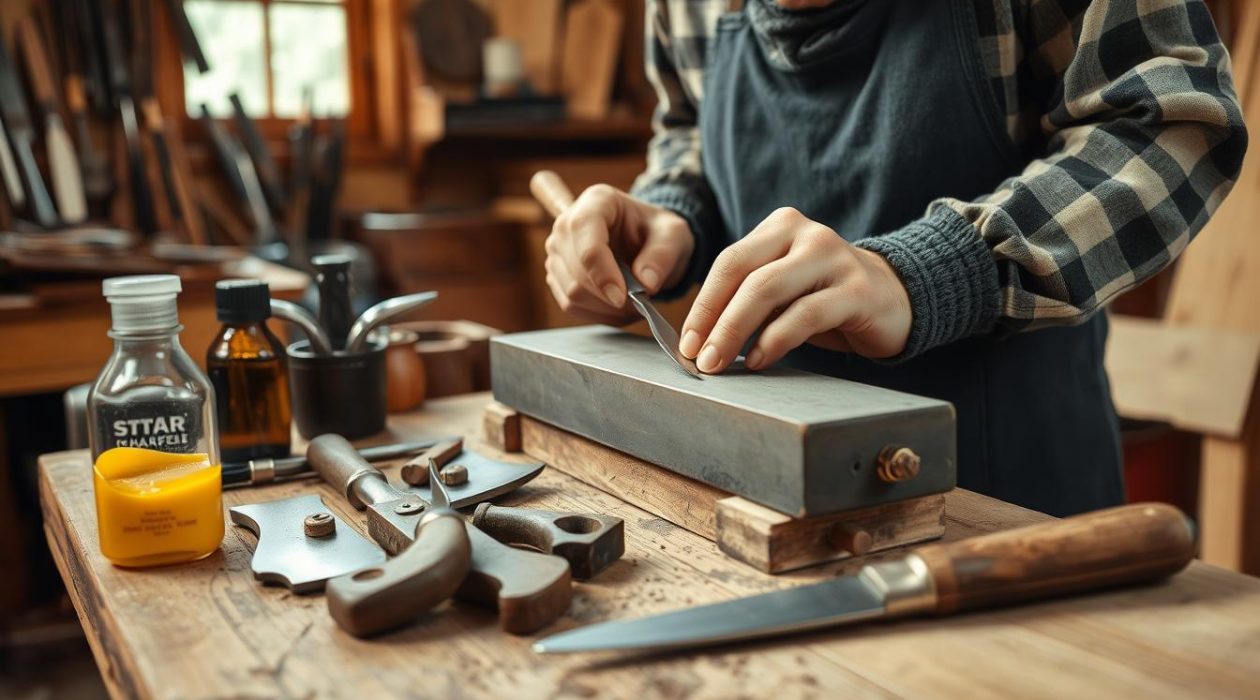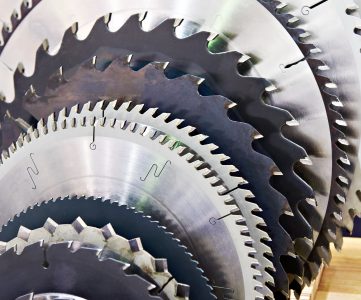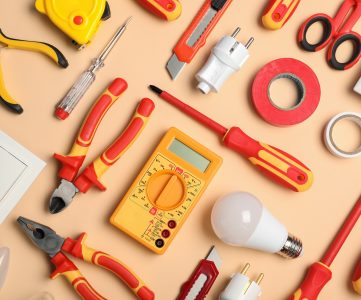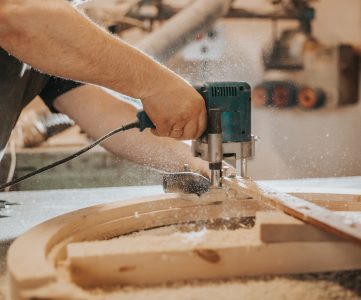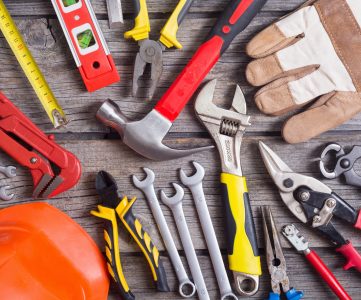Sharpening hand tools and caring for cutting tools is crucial for tasks needing precision and accuracy. It boosts efficiency and safety. Learning these skills can lead to better results and lower accident risks.
Tool maintenance, including sharpening and caring, is key. It enhances tool performance and safety. With the right methods and tools, your cutting tools will stay effective for longer.
Introduction to Tool Maintenance
Regular maintenance is essential to extend your cutting tools’ life. Sharpening and caring for tools prevent dullness and damage. This reduces accidents and boosts productivity. We’ll discuss the importance of these practices and offer tips for maintaining your tools.
Key Takeaways
- Sharpening hand tools can increase efficiency and safety
- Caring for cutting tools can extend their longevity
- Proper tool maintenance can reduce the risk of accidents
- Regular sharpening and maintenance can improve tool performance
- Sharpening and caring for cutting tools requires the right techniques and equipment
Understanding Your Cutting Tools
Understanding the different types of cutting tools is crucial for maintaining knives and scissors. Knowing the right tools for your needs and how to care for them is essential. Proper maintenance extends the life of your tools and keeps them effective.
Knives, scissors, and other blades vary in characteristics. For knives, materials like stainless steel, carbon steel, or titanium impact their performance. Each material has its strengths and weaknesses.
Types of Cutting Tools
- Knives: used for cutting and chopping
- Scissors: used for cutting and trimming
- Other blades: used for various tasks, such as pruning and sawing
Maintaining your cutting tools prevents dullness and extends their life. Dull tools are dangerous, requiring more force to cut, which can lead to accidents. Knowing your tools and their properties ensures proper care and effectiveness.
Blade Materials and Their Properties
Blade materials, like stainless steel and carbon steel, influence tool performance and maintenance. Stainless steel blades resist corrosion, while carbon steel blades are more susceptible to rust. Understanding these properties helps in selecting and maintaining the right tools.
Essential Safety Measures for Tool Maintenance
When engaging in DIY sharpening, safety must be paramount. Sharp objects pose a risk, and it’s vital to prevent accidents. Always wear gloves and safety glasses to protect yourself.
A clean, organized workspace is crucial for safe DIY sharpening. Ensure the area is well-lit, clutter-free, and have a first aid kit ready. These precautions help avoid injuries and make sharpening safer.
Proper sharpening techniques are also key to safety. Hold the tool at the right angle, apply the correct pressure, and avoid over-sharpening. By following these steps and taking safety measures, you can safely enjoy DIY sharpening.
Here are some important safety tips for DIY sharpening:
- Always wear protective gear, such as gloves and safety glasses
- Keep the workspace clean and organized
- Use proper techniques when sharpening tools
- Avoid over-sharpening and take regular breaks
Basic Principles of Blade Sharpening
Sharpening hand tools is a vital skill for those who work with blades. To get the best results, understanding the basic principles of blade sharpening is key. This includes picking the right sharpening angle, selecting the correct grit, and mastering different sharpening techniques.
The angle at which you sharpen a blade is crucial. The ideal angle depends on the blade type and its intended use. For instance, a chopping knife needs a different angle than a slicing knife.
Sharpening Angles
Typically, a 20-degree angle is recommended for chopping knives, while slicing knives benefit from a 10-degree angle. Yet, these angles can be tweaked based on personal preference and task-specific needs.
Grit Selection
Choosing the right grit is another critical step in sharpening hand tools. Various grits serve different purposes in the sharpening process. Coarser grits (100-200) are for initial sharpening, while finer grits (600-1200) are for polishing and honing.
Common Sharpening Methods
Several sharpening methods are commonly used, including whetstone sharpening, diamond sharpening, and electric sharpening. Each method has its pros and cons, and the choice depends on personal preference and task requirements.
By grasping and applying these basic principles of blade sharpening, individuals can sharpen their hand tools effectively. Regular sharpening not only keeps tools sharp but also extends their lifespan and prevents damage.
| Sharpening Method | Description |
|---|---|
| Whetstone Sharpening | A traditional method using a stone to sharpen the blade |
| Diamond Sharpening | A method using a diamond-coated surface to sharpen the blade |
| Electric Sharpening | A method using a machine to sharpen the blade |
Choosing the Right Sharpening Equipment
When it comes to caring for cutting tools, selecting the right sharpening equipment is crucial. With so many options available, it can be overwhelming to decide which one to use. The goal is to find a sharpening tool that is easy to use, effective, and suitable for the type of cutting tool being sharpened.
A well-chosen sharpening tool can make a significant difference in the performance and longevity of cutting tools. By investing in the right equipment, individuals can ensure their cutting tools remain in good condition. This reduces the need for frequent replacements and maintains their effectiveness.
Whetstones and Water Stones
Whetstones and water stones are popular choices for sharpening cutting tools. They are relatively inexpensive and can be used to sharpen a variety of tools, including knives and scissors.
Diamond Sharpeners
Diamond sharpeners are another option, offering a more aggressive sharpening surface. They are ideal for sharpening very dull tools or for those who want a more precise sharpening experience.
Electric Sharpeners
Electric sharpeners provide a convenient and efficient way to sharpen cutting tools. They are often more expensive than other options but offer a high level of precision and speed.
By considering the type of cutting tool, the level of sharpening required, and personal preference, individuals can choose the right sharpening equipment for their needs. This ensures they are caring for cutting tools effectively.
Professional Care Tips for Kitchen Knives
Maintaining knives and scissors in the kitchen requires proper care to extend their lifespan and keep them sharp. Regular cleaning and storage prevent rust and corrosion. Sharpening is also vital, as a dull knife poses more danger than a sharp one.
To ensure your knives and scissors remain in excellent condition, regular cleaning is crucial. Wash them with soap and water, then dry them thoroughly. Store them in a dry area, like a knife block or magnetic strip. This prevents rust and keeps them organized.
For advanced care, use a sharpening steel or whetstone to hone your knife’s edge. This maintains sharpness and prevents dullness. Also, using a cutting board protects your knives and scissors from damage. Adhering to these practices ensures your kitchen tools remain in optimal condition.
Some essential tips for maintaining knives and scissors include:
- Regular cleaning and storage
- Sharpening with a steel or whetstone
- Using a cutting board to protect your knives and scissors
By following these guidelines, you can keep your knives and scissors in top shape. This ensures they continue to perform effectively in your kitchen.
Maintaining and Sharpening Garden Tools
Garden tools, like pruning shears, lawn mower blades, and garden scissors, need regular care to work well and last longer. Sharpening hand tools is crucial, as dull tools can be dangerous and less effective. Sharpening your tools improves their performance and lowers accident risks.
Pruning Shears
Pruning shears are vital for trimming and pruning plants. They must be sharpened often to stay effective. Use a whetstone or diamond sharpener, following the manufacturer’s guidelines for the best results.
Lawn Mower Blades
Lawn mower blades need regular sharpening to cut grass evenly and efficiently. Dull blades can tear the grass, making it susceptible to disease and pests. Sharpen your blades with a sharpener or have them professionally sharpened.
Garden Scissors
Garden scissors are essential for cutting and trimming plants. They should be sharpened regularly to stay effective. Use a whetstone or diamond sharpener, following the manufacturer’s instructions for optimal results.
By following these tips and sharpening hand tools regularly, you can keep your garden tools in top condition. This ensures they remain effective and efficient. Regular maintenance and sharpening also extend your tools’ lifespan, saving you money and time over time.
Workshop Cutting Tools Maintenance Guide
Proper care of cutting tools is key to extending their life and ensuring top performance. In a workshop, tools like chisels, planes, hand saws, and power tool blades are used often. Regular maintenance is essential. By adopting a few simple practices, you can greatly enhance your tools’ longevity.
Regular cleaning is a crucial step in tool care. Remove debris or residue with a soft brush or cloth. Then, apply rust-inhibiting oil to protect the metal. For tools with moving parts, like hand saws, a small amount of lubricant is needed to keep joints smooth.
Sharpening and Maintenance Tips
- Use whetstones or diamond sharpeners to sharpen cutting tools, as these methods provide a precise and consistent edge.
- Always follow the manufacturer’s instructions for sharpening and maintenance to avoid damaging the tools.
- Store cutting tools in a dry, secure location to prevent damage and rust.
By following these simple tips, your workshop cutting tools will stay in excellent condition. This ensures years of reliable service. Always handle your tools with care and never use them beyond their intended capacity.
Proper Storage of Cutting Tools
Proper storage is key to keeping your cutting tools in top condition. After DIY sharpening, it’s vital to store them in a dry, secure spot. Use protective cases, sheaths, or containers made for cutting tools.
Benefits of proper storage include:
- Prevention of accidental damage or injury
- Reduced risk of rust and corrosion
- Extended lifespan of your cutting tools
For those who enjoy DIY sharpening, storing sharpening gear like whetstones and diamond sharpeners is also crucial. Keeping these tools organized and secure ensures they stay in good shape. This makes them easily accessible when you need them.
By following these simple storage tips, you can maintain your cutting tools effectively. This is true whether you’re a professional or a hobbyist. Proper storage is a fundamental part of DIY sharpening and tool care.
| Tool Type | Storage Recommendation |
|---|---|
| Cutting Tools | Protective cases or sheaths |
| Sharpening Equipment | Storage containers or organizers |
Preventing Rust and Corrosion
Regular maintenance is crucial for extending the life of your cutting tools. Preventing rust and corrosion is a key aspect of this process. When sharpening hand tools, it’s essential to consider the methods and materials used to prevent damage.
Cleaning your tools after use is vital to prevent the buildup of debris and moisture. This buildup can lead to rust and corrosion. Simple methods such as washing with soap and water, and then drying thoroughly, can help.
Cleaning Methods
- Wash tools with mild soap and water
- Dry tools thoroughly after cleaning
- Apply a rust-inhibiting coating to tools
Applying protective coatings to your tools can also help prevent rust and corrosion. This includes oils, waxes, or other specialized coatings designed for sharpening hand tools.
Protective Coatings
Environmental considerations also play a significant role in preventing rust and corrosion. Factors such as humidity, temperature, and exposure to chemicals can all impact the lifespan of your cutting tools.
By understanding these factors and taking steps to mitigate their effects, you can extend the life of your sharpening hand tools. This ensures they remain in good working condition.
Advanced Sharpening Techniques for Different Materials
Understanding the unique characteristics of various materials is key when caring for cutting tools. Each material, like steel, titanium, and ceramic, demands specific sharpening methods for peak sharpness. For example, steel tools can be sharpened traditionally, whereas titanium and ceramic tools might need diamond stones or ceramic hones.
It’s vital to consider each material’s properties for effective sharpening. Steel tools can be sharpened to a high level, but titanium tools need a gentler touch to avoid damage. Ceramic tools, needing precision and control, are the most challenging to sharpen.
Important aspects of caring for cutting tools from different materials include:
- Choosing the right sharpening stone or hone for the specific material
- Applying the correct amount of pressure and sharpening angle
- Monitoring the tool’s edge for signs of wear or damage
By adhering to these guidelines and employing the correct techniques, you can maintain your cutting tools’ peak condition. This ensures they continue to perform optimally over time.
| Material | Sharpening Technique | Recommended Stone or Hone |
|---|---|---|
| Steel | Traditional sharpening | Whetstone or water stone |
| Titanium | Advanced sharpening with diamond stone | Diamond stone or ceramic hone |
| Ceramic | Precision sharpening with ceramic hone | Ceramic hone or diamond stone |
By mastering these advanced sharpening techniques and caring for cutting tools from various materials, you can prolong your tools’ lifespan. This ensures they remain at their best performance level.
Troubleshooting Common Sharpening Problems
When maintaining knives and scissors, it’s crucial to tackle common sharpening issues. These include over-sharpening, uneven edges, and challenges specific to certain materials. These problems often stem from incorrect sharpening methods or subpar equipment.
Some common sharpening problems include:
- Over-sharpening, which can weaken the blade
- Uneven edges, causing poor cutting performance
- Material-specific challenges, like sharpening ceramic or titanium blades
To tackle these issues, consider employing specialized sharpening stones or techniques. The water stone method or ceramic hone sharpening can be effective. Regular upkeep and proper storage of your knives and scissors can also help prevent these problems.
A well-maintained cutting tool is vital for efficient and safe use. Understanding the causes of common sharpening problems and employing the right techniques and equipment ensures your knives and scissors stay in prime condition.
By adhering to these tips and staying alert, you can address common sharpening problems. This keeps your cutting tools in peak condition, making knife and scissors maintenance a simple task.
| Sharpening Issue | Cause | Solution |
|---|---|---|
| Over-sharpening | Improper sharpening technique | Use a sharpening stone with a finer grit |
| Uneven edges | Incorrect sharpening angle | Adjust the sharpening angle and use a guide |
| Material-specific challenges | Inadequate equipment or technique | Use specialized sharpening stones or techniques |
Maintaining Your Tools for Lifetime Performance
Investing time in the proper maintenance and sharpening of your cutting tools is crucial. By following the techniques and tips outlined in this comprehensive guide, you can ensure your DIY sharpening efforts keep your hand tools in top-notch condition for years to come. Sharp, well-cared-for blades not only work more efficiently but also enhance safety, reducing the risk of accidents and injuries.
Whether you’re honing your kitchen knives, reviving your garden tools, or maintaining your workshop essentials, a little bit of proactive maintenance can make all the difference. Embrace the power of sharpening and embrace the lifelong performance of your most essential cutting tools.
